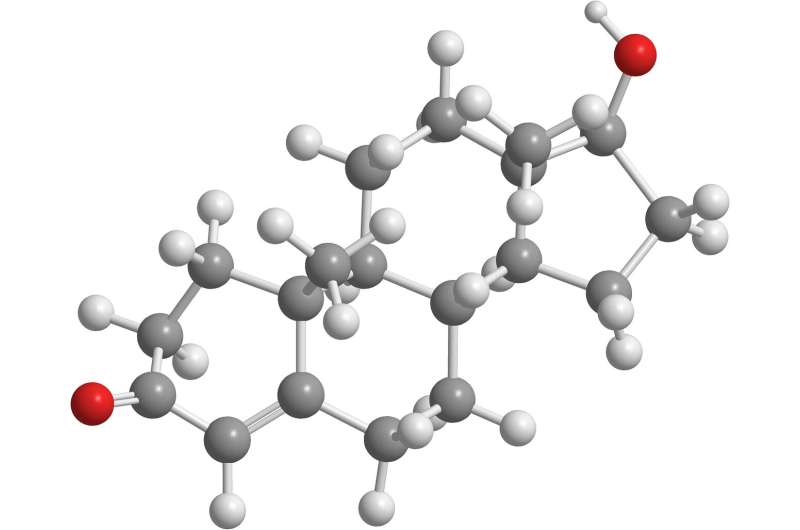Blocking FNDC5, the precursor of the exercise hormone irisin, protects mice from cancer-induced cachexia

The severe muscle atrophy and weakness commonly associated with cancer growth (i.e., cachexia) can be prevented simply by being deprived of FNDC5, the precursor of the exercise hormone irisin, researchers from the Indiana University School of Medicine have found.
When cancer patients develop cachexia, their bodies waste away. Cachexia is marked by extreme fatigue, weight loss, anemia, and inflammation, among other deadly symptoms. One feature of this potentially fatal condition is the transformation of calorie-storing white fat cells into fat-burning, heat-producing brown cells. Because irisin, a hormone that floods the body during vigorous physical activity, is known to turn white fat tissue brown, researchers wondered whether deleting irisin would ameliorate cachexia's devastating effects in tumor-bearing mice.
Fabrizio Pin, Assistant Professor of Anatomy, Cell Biology & Physiology at the medical school, presented the findings today at the annual meeting of the American Society of Bone and Mineral Research in Austin, Texas, U.S..
The study involved mice in whom the protein-coding gene FNDC5 (fibronectin type III domain‐containing protein 5) had been disrupted, or "knocked out." Because FNDC5 is a precursor of irisin, which is released from muscle cells during exercise, these genetically modified "knockout" mice were incapable of producing the calorie-burning hormone.
The mice were implanted with cells causing Lewis Lung Carcinoma or metastatic MC38 colorectal cancer. The knockout male mice developed both types of tumors, but unlike normal mice, no cancer cachexia. They maintained normal body weight and skeletal muscle mass in contrast to control mice carrying the same tumor mass. The absence of FNDC5/irisin protected the male knockout mice against muscle weakness; they maintained normal total locomotor activity compared with the control mice. In contrast, the female knockout mice showed no significant protective effects from their lack of irisin.
The researchers observed high levels of UCP1, a browning inducing gene, in the adipose tissue of the normal tumor-bearing mice compared to non-tumor bearing mice. In contrast, mice lacking FNDC5 show no elevation in adipose tissue, comparable to healthy mice.
They also examined knockout mice for evidence that their tumors had activated or elevated pro‐atrophic pathways in their skeletal muscle, such as STAT3 phosphorylation and Atrogin1 and Murf1 expression, all important regulators of protein catabolism. In addition, evidence of metabolic alteration such as increased levels of pyruvate dehydrogenase kinase 4 and succinate dehydrogenase activity were examined. Surprisingly, these regulators were unchanged in the knockout mice and similar to those in mice lacking tumors.
Even though these animals were protected from the muscle-withering effects of tumors, they showed little or no protection from tumor-induced bone loss, suggesting a targeted effect on muscle. These observations suggest that FNDC5/irisin has sex-dependent effects on muscle, where deletion protects males from cancer cachexia but not females.

















